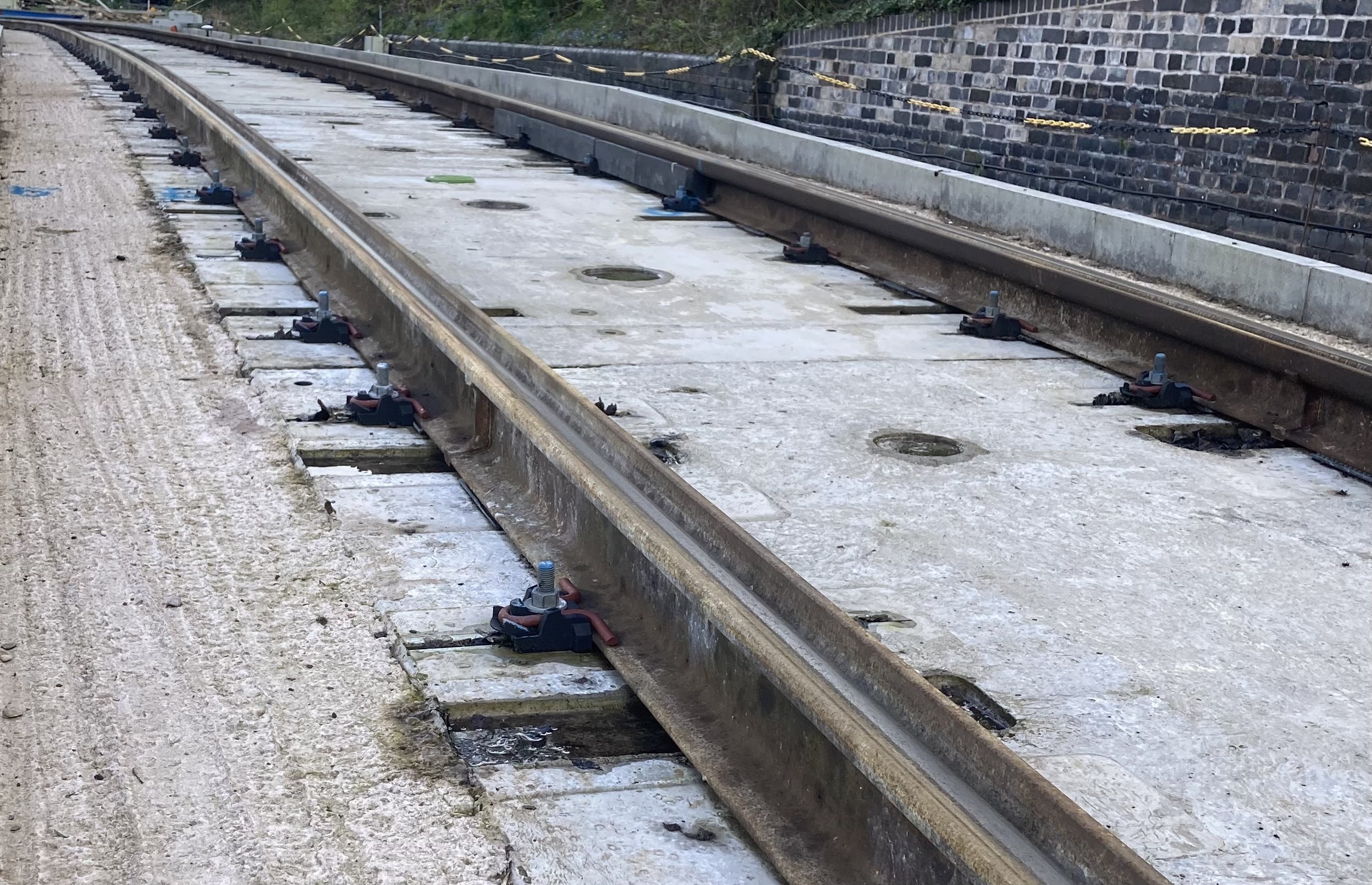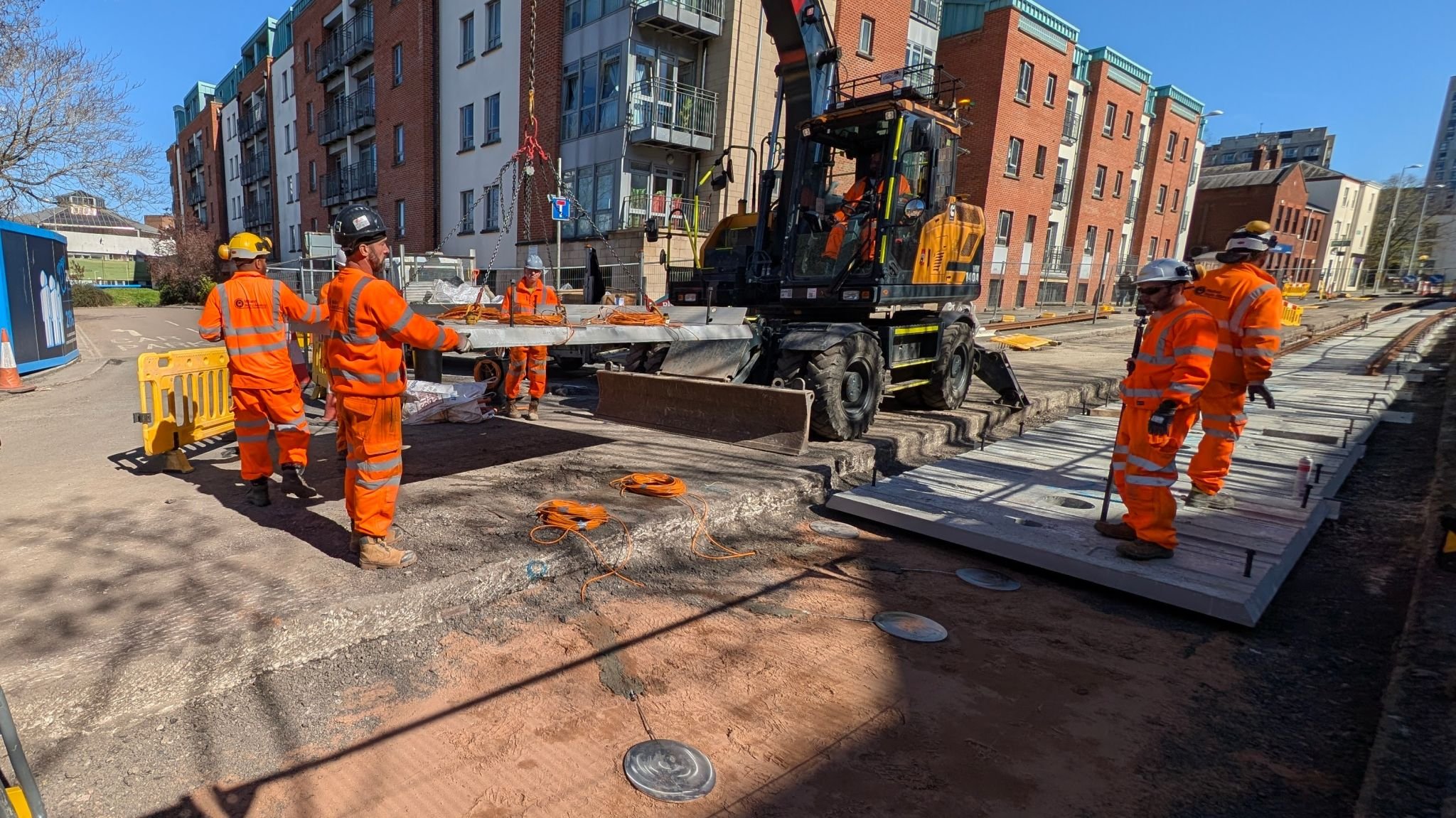V.L.R.
This post is a blatant attempt to cadge an invitation.
Coventry City Council will this month open their new city centre demonstrator of Very Light Rail, and I want a ride. (To avoid having to go through the Transport and Works Act approval process, the demonstrator is being built as a private line by invitation only).
But what is Very Light Rail?
”I don’t want a bus”
The project was born out of Coventry’s desire for a better way of linking the city to Birmingham Interchange once HS2 opens. They wanted a tramway but realised they were never going to afford a tramway to Birmingham Interchange if tramways continue to cost tens of millions of pounds per mile.
At this point, most councils would give up, or ask a consultancy for advice.
But Coventry is made of stronger stuff.
With cross-party consensus, they set out to create a tramway that is much, much cheaper than the norm, with Warwick Manufacturing Group (WMG) at the University of Warwick providing much of the brainpower.
HS2 Birmingham Interchange. Looks great: how do I get there?
There are two key elements to VLR, the track and the tram. I saw both last year when I visited their test site in Dudley.
Track
Ironically, the first thing you see when you arrive is a tram track under construction. But it’s not the test track; it’s an extension of the Midland Metro.
The Metro track being built outside their door is being done using the conventional British method, and requires nearly a metre of concrete foundations and concrete slab and all the utilities being moved.
The combination of the utilities coordination challenge and the heavy engineering means they’ve been working on site for four years. It’s a helpful illustration of the problem the VLR team are trying to solve.
This image of the traditional tram track being built outside their building shows the depth of concrete - with foundations beneath that
At the opposite side of the building is the VLR test track. This uses standard pre-fab track pallets that can be laid on top of the existing road foundations including utilities (they recommend moving cast iron utilities as they can need maintenance but standard utilities and man-holes can simply be left underneath the track). The total dig is around 30cm; the length of a child’s ruler or the standard dig for a road resurfacing project. The pallet is made of a material that is more flexible than concrete so can flex as necessary. The pallets are standard regardless whether the track is straight or curved, so production costs can be very low.
Whereas this shows the VLR track pallet, which can just be laid on the existing surface without concrete or foundations. One pallet works for either straight or curved track
Colin Knight, innovation director at Coventry City Council, points out that this 30 cm figure is crucial: it is the equivalent of a road resurfacing, for which they would normally dig to 300mm. This means installing a tramway becomes ‘normal work’ for a local authority. They believe they can install the track on site in two weeks.
Crucially, there’s no need to remove all the utilities underneath. They can stay where they are. If utilities need to access the site once the tramways up and running, an individual pallet can be removed with JCB, often overnight.
One of the key questions is whether it’s OK to leave utilities in place below a working light rail line.
Well, they’ve put a lot of thought into this question. They wouldn’t build over cast iron because these pipes need more maintenance. But modern utilities have fewer emergencies. Many activities can be dealt with through manholes (which can be incorporated into the pallets) or via side access.
But they’re also realistic: every so often (they estimated to me when I was there every five years, though I don’t know if this was an estimate based on modelling) there would be an emergency that would necessitate an immediate, unplanned closure.
That is obviously bad.
But is it better to have a tramway that works most of the time or, because it is unaffordable, no tramway at all? Discuss!
Here’s what it looks like with the pallets connected together to form the test track. As part of a roadway, asphalt would then be used to level up to the surface of the rail
The composite pallets are very impressive and achieve a genuine step forward in the state-of-the-art. However, to an extent, they also serve a purpose in simply giving us confidence not to feel the need to pour so much concrete. I was in Prague last year and took this photo of a tram extension being built there. You can see that, using conventional methods, they’re already far closer to the 300 mm than we are. This is probably part of the reason why the cheapest UK tram project of the 21st century was more expensive than the most expensive mainland Europe project.
The VLR method gives us the opportunity to do a hard reset on tram build costs.
Tram
The VLR track is complemented by a lightweight tram using composite materials from the automotive sector, around 30% lighter than a standard tram. The tram also has a patented bogie that can go around a 15 metre radius curve. Why so tight? Because that means the tramway can follow the existing street layout, so removing the costs of land acquisition and demolition.
The tram uses batteries so there’s no need for catenary. Indeed, the tram must use batteries as the track pallets aren’t designed to return current.
The VLR tram in service on their test track
The interior is spacious and feels like “proper” transport. I was amazed to discover that the vehicle was powered by a single Nissan Leaf battery.
They are focused on achieving autonomy so that the cost can be cut even further. At the moment, it is manually driven.
To be honest, while autonomy would be great, if I was them, I’d focus on the hardware cost savings for now. The thing that really sets VLR apart is the track.
Demonstrator
The team at Coventry have been confident for a while that they can build track to an order-of-magnitude faster and cheaper than conventional tram track.
The Coventry City Centre demonstrator is part of proving this. While they can’t carry fare-paying customers, they can run a tram on a street - and they can have cars, lorries and buses thundering over their pallet, and prove that it works.
They believe the cost could be around a quarter of the cost of a traditional tram, built the British. If they get even close to that, it could transform the business case for urban rail. Just think how many failed business cases would become slam dunk passes if the cost had been reduced not by 5% or 10% but more than 50%!?!
Here’s the track being laid in Coventry City Centre. Looks simple, doesn’t it…
So there’s lots more to prove but definitely one to watch.
Can I have a ride please?
Can I Help You?
Click Here for Services
👋 I'm 𝗧𝗵𝗼𝗺𝗮𝘀. I help organisations like yours drive 𝗶𝗻𝗻𝗼𝘃𝗮𝘁𝗶𝗼𝗻, deliver 𝗰𝗵𝗮𝗻𝗴𝗲, and achieve 𝗳𝗮𝘀𝘁𝗲𝗿 results, drawing on 20 years of leadership across public and private sectors.
🚀 I offer 𝘀𝗽𝗲𝗮𝗸𝗶𝗻𝗴, 𝗺𝗲𝗻𝘁𝗼𝗿𝗶𝗻𝗴, and 𝗰𝗼𝗻𝘀𝘂𝗹𝘁𝗶𝗻𝗴 that energise teams, shape strategies and remove barriers to change. Whether you aim to accelerate innovation, drive change, or inspire your people, I’m here to help. Let’s talk!









